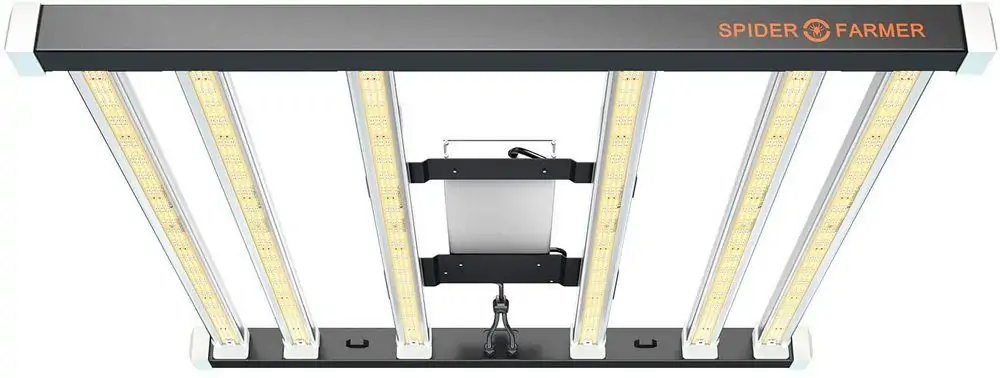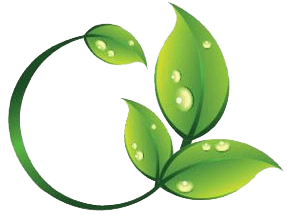Indoor Growers: Know The Pros And Cons Of LED Grow Lights
Brockney C • August 26, 2021
If you grow indoors, you need grow lights. But they can’t just be any lights. They must be capable of providing the type of light your crops need to boost healthy development and yield incredible flowers

You may have noticed that in recent years, the light-emitting diode (LED) has increased in popularity among growers. But you’ve likely also heard growers talk about bad experiences they’ve had with LED lights, recommending high intensity discharge (HID) lights instead. HID grow lights have long been a go-to choice, and there is a lot of useful information on how to use them effectively.
So, what kind of lighting system is best for your grow op?
In this article, we’ll break down the pros and cons of LED grow lights. Read on to learn more about the advantages and disadvantages of LED grow lights so you can decide for yourself whether they’re the right choice for your indoor grow.
The History Of LED Lights In The Grow Community
Compared to HID lights, LEDs are relative newcomers to the grower’s toolbox. Like every other kind of technology, a lot of early LEDs simply weren’t that effective. Many of them were too dim to provide plants with the sufficient amount of light they needed, which pushed early adopters to stick with other types of lighting. However, today’s LED systems have seen a rapid evolution, and they’re now better optimized than ever for growing.
Advantages Of LED Grow Lights
Are there substantial advantages to using an LED system as opposed to HID lighting for your indoor grow?
Actually, yes.
LED grow lights have become popular with growers for good reason — they offer many benefits that other lighting systems don’t. Advantages of choosing LED lights for growing plants indoors include:
- Efficiency
- Temperature
- Lifespan
- The spectrum of light they provide
- Their size
- Greater Efficiency
Nearly every grower who recommends using LEDs for growing plants will talk about the efficiency of such a lighting system. LEDs are in fact way more efficient than HID lights, which translates to lower utility costs for you.
Cooler Temperature
LEDs run significantly cooler than HID bulbs. HID systems can become extremely hot, putting crops at risk of heat damage, and can even become fire hazards when they’re used in small spaces. (Learn more about the importance of moderate grow-room temperature here.)
Longer Lifespan
LEDs offer more than just improved efficiency and cooler temperatures. You’ll also get more grow hours out of your LEDs — a lot more. LED grow lights typically last for 50,000 hours or more, whereas HID bulbs generally last 10,000 to 18,000 hours, depending on the specific type of bulb. When it comes to longevity, there’s really no competition.
The Full Spectrum
A major advantage of using LED grow lights is the huge spectrum of energy they provide. When you choose LED, you don’t have to worry about switching out lights as your crops mature through their growth cycle. Even better — you can actually install a system that’s tailored specifically to the type of crop you grow.
Less Bulk
Are you growing in close quarters? If so, that’s another reason to go with LEDs, which have the distinct advantage of being able to fit into smaller, tighter grow areas. This advantage goes hand in hand with the cooler temperature of LEDs — not only can you create a more compact grow room, but your crops can grow fairly close to the lights without the risk of heat burn.
Keep in mind that heat burn isn’t the same as light burn — being too close to any type of light bulb puts your crops at risk of suffering from light burn. Reduce the chance of your crops facing light burn by keeping them within the ideal distance from your LEDs — 12 to 18 inches.
Disadvantages Of LED Grow Lights
As you can see, there are some big advantages to choosing the LED route for your grow room. But before you go running to the store to stock up on LEDs, let’s take a look at the pitfalls of this system.
The truth is, like any kind of artificial lights, LED grow lights have a downside. These disadvantages include:
- Power level
- Blue light
- Upfront cost
- Risk of light burn
- Lack of standard specs across manufacturers
- Less Powerful
Simply put, HID lights are more powerful than LEDs. More power means more intense light, and more intense light means complete nourishment for the entire garden.
Blue Light: Good For Plants, Bad For You
Your crops thrive on light from the blue end of the spectrum, especially when they’re in the vegetative stage. Your eyes, on the other hand? Not so much. Prolonged exposure to blue light, one of the types of light that LED bulbs emit, can damage your retinal cells.
An LED System Is A Big Investment
Many growers are turned off by the high upfront costs associated with LED lights. Buying an LED system means making a larger initial investment than that of a similarly powered HID system, but a little bit of math reveals that you’ll actually save money in the long run when you go with LEDs because of their high efficiency.
Light Bleaching Risk
Light burn is a type of damage your crops can suffer when they’re situated too close to the lights, turning the leaves yellow then white. As the leaves lose their natural color, they also lose potency and aroma. Over time, plants that have suffered light burn produce bleached flowers that ultimately have nothing to offer your consumers.
No Standard Specs (Yet)
Unlike HID lights, LEDs don’t have standard specs across different manufacturers — that means more homework for growers. When you choose LED grow lights, you have to do thorough research about the specific system components you’re getting. If you don’t, you run the risk of buying incompatible parts or struggling to compare the quality of said products. This probably won’t always be the case, however. As LED lights become more mainstream, expect their specs to become more standardized.
So, Are LED Lights The Best For Indoor Growing?
As you can tell, there are definitely some advantages to going with an LED system, but whether they’re the best choice for indoor growing depends on a few factors. For a lot of growers, the low temperature, efficiency, lifespan, size and spectrum of LEDs make them ideal for indoor grows. Other growers, typically those running large-scale operations, prefer HID lights because they provide the most intense light. Of course, HIDs come with their own challenges — they consume way more energy than LEDs, and also force the grower to invest in additional equipment, like protective hoods and exhaust fans. But if your main goal is to maximize the quantity of crops that your garden produces, then HID is probably the way to go.

